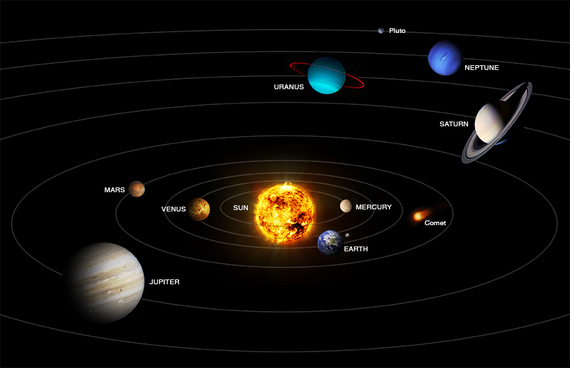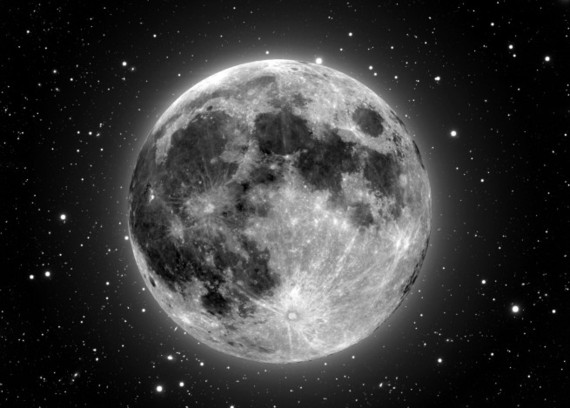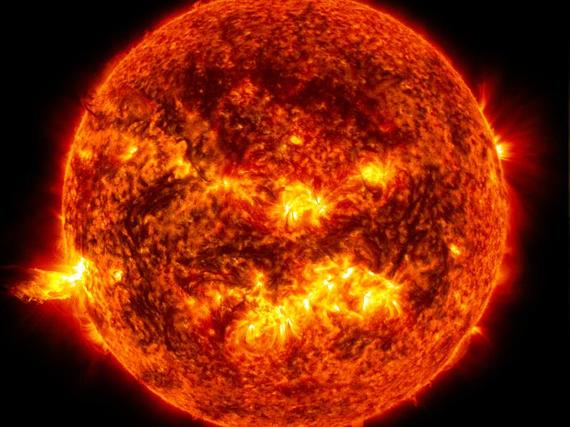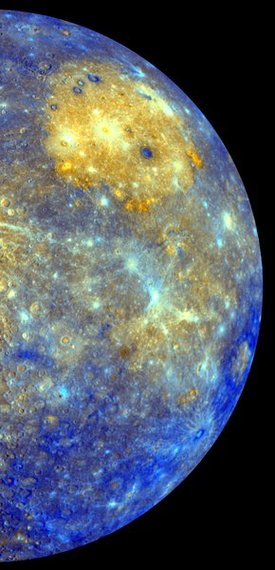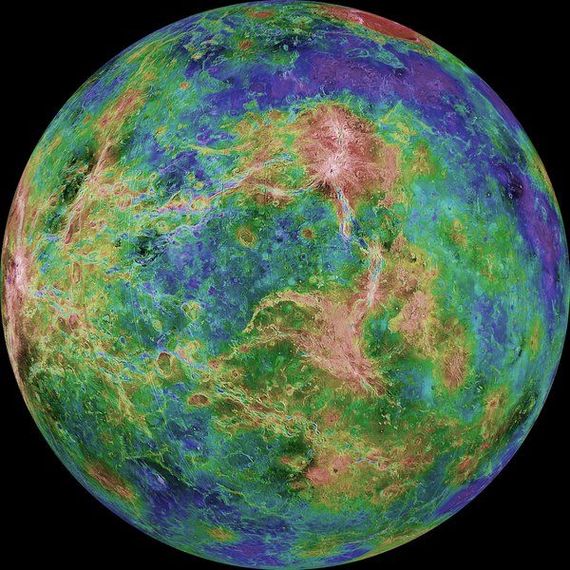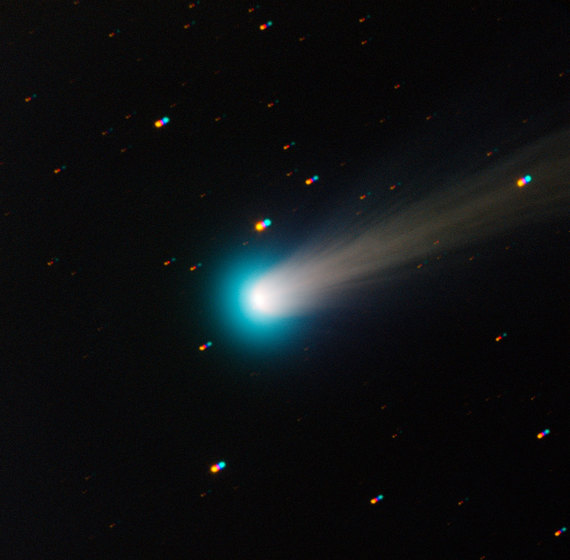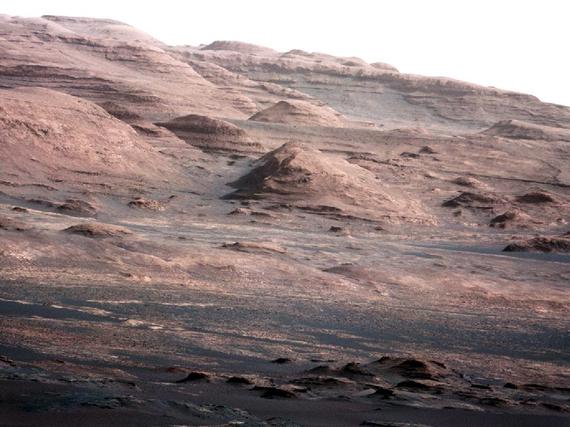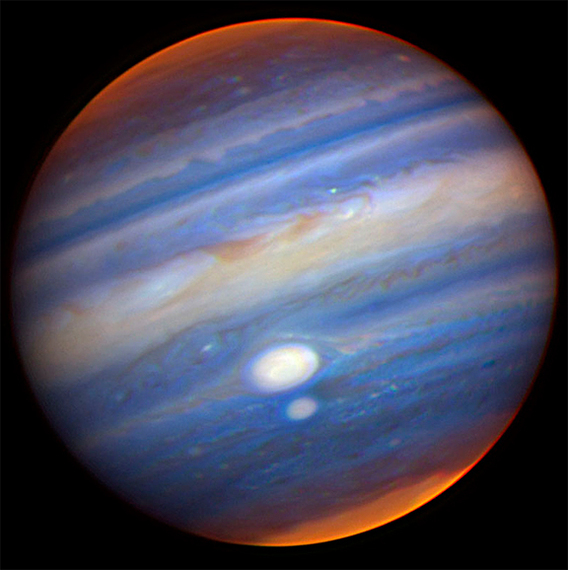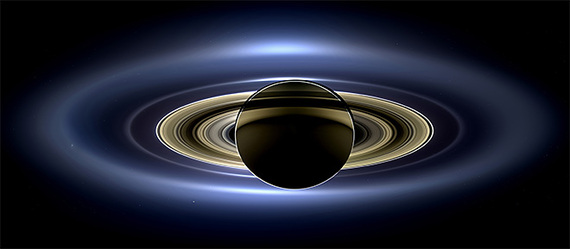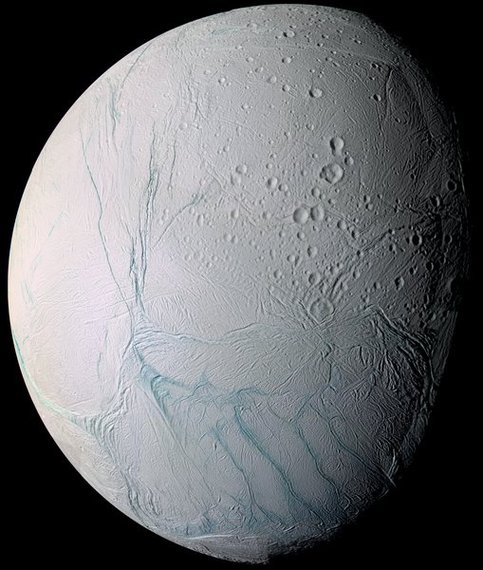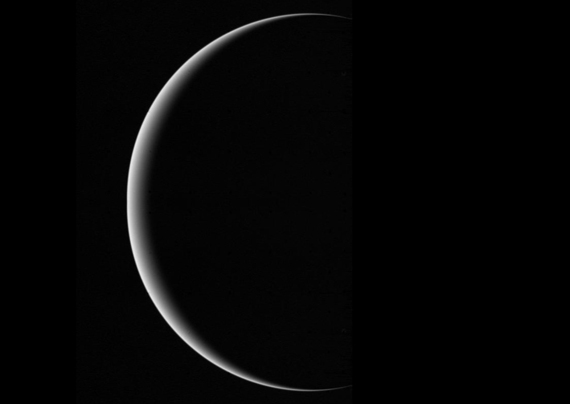An illustration of our Solar System, with its Sun and its eight planets, plus dwarf planets, comets, etc. (Image: NASA/CXC/M.Weiss)
Whether you brace yourself for the holidays or are actually able to embrace them (or a little bit of both), it's the time of year to think about home. And while that usually means family, friends, and food, we can all use a little perspective sometimes, no matter how excited we are for the next six weeks or so.
That said, we thought it was a good time to compile a list of our favorite places to visit in our cosmic home: the Solar System. We like to think of our Solar System as our neighborhood block in outer space. Earth is our house, while the other planets, their moons, the asteroids, etc., are the other homes, alleys, and parks nearby.
Taking stock of our Solar System became even more relevant earlier this month, when scientists announced that there may be as many as 4 billion Earth-like planets in our Milky Way galaxy. (If the Solar System is our neighborhood block, then the Milky Way is the metropolitan area we live in.) Not only are these planets roughly about the size of Earth, but they are probably "habitable" -- that is, not too hot or too cold to hold on to liquid water. This is what scientists want to find because until some alien life form is found that bucks the trend, we'll assume that water is what gets life going.
While all of this planet-finding business may seem old hat, our Solar System was the only planetary system we knew about until the 1990s. And just as Holly Hunter is still really funny in Home for the Holidays no matter how many times we've seen it, our Solar System remains full of surprises and worth exploring.
So go ahead and take a moment out of a busy holiday season to tour your Solar System. (And by all means, take more than a moment if you need an excuse to get away from whatever gathering you may find yourself in.) There's no place like home for the holidays.
The Top 10 Destinations in Our Cosmic Neighborhood
The Moon
(Image: T.A. Rector, I.P. Dell'Antonio, NOAO, AURA, NSF)
Our Moon is the only celestial body that we've been able to send astronauts to so far (as opposed to the human-made International Space Station). This shot of our Earth's natural satellite is dramatic and also probably different from what many may have seen. In most photographs the light of the Moon drowns out its surrounding stars. This one, however, was made by compositing two separate images of the Moon plus another of just the stars.
The Sun
(Image: NASA)
Without the heat and light from the Sun, our planetary home on Earth would be a cold, barren wasteland. Our celestial benefactor is not always peaceful and quiet, however. In fact, the Sun experiences storms that can result in streams of energized particles that bombard the Earth. These solar storms can create spectacular auroras, but they can also be disruptive and knock out satellites and cellphone service.
Mercury
(Image: NASA)
Mercury may be our most extreme neighbor. Not only is it the closest planet to the Sun, but it is the smallest and densest. And it has even more superlatives: It has the oldest surface and the largest daily variations in surface temperature. Mercury's diameter spans only 3,000 miles (4,800 kilometers), just a little more than the distance between New York and Los Angeles.
Venus
(Image: NASA)
You know that house across the street that looks very similar to yours, but not quite? Venus may be that for Earth. Venus has roughly the same size, mass, density, and composition as Earth. The difference is that the atmosphere on Venus had a greenhouse effect that went wild, and now the planet has a superheated surface, with temperatures over 400C (750F). Radar data collected over many years were used to create this color-coded portrait of our planetary neighbor.
Comet ISON
(Image: TRAPPIST/E. Jehin/ESO)
Comets are neighbors who usually live on the outskirts of town but occasionally venture in for a visit. When they do, comets bring far-flung bits of the primordial Solar System almost to our cosmic doorstep, allowing scientists to better investigate them. This recent image of Comet ISON was taken at ESO's La Silla Observatory on Nov. 15, 2013. Comet ISON will soon make its closest approach to the Sun.
Mars
(Image: NASA)
All the houses in our cosmic block were built at the same time. This means that like Earth and the rest of the Solar System, Mars (the fourth planet from the Sun) is about 4.6 billion years old. Curiosity, NASA's most recent rover on the red planet, has been sending beautiful snapshots of our next-door neighbor. This one shows Mount Sharp, where the rover is heading. The color scale in this image has been enhanced to show the Martian scene in lighting conditions similar to what we have on Earth. This helps scientists who are actively analyzing the terrain from afar.
Jupiter
(Image: T.Rector [U. Alaska, Anchorage], C. Trujillo and Gemini Altair Team, NOAO/AURA/NSF)
Jupiter is the McMansion in our cosmic neighborhood. With over 50 known moons and an enormous magnetic field, Jupiter is by far the biggest planet in our Solar System. This infrared image of Jupiter has been color-coded to show cloud height from high altitude (white) through mid-range (blue) to low altitude (red). The Great Red Spot and its little buddy, Red Spot Junior, are at the top of the atmosphere, which is why they appear mainly as white in this image.
Saturn
(Image: NASA)
There's nothing like a family portrait around the holidays, though invariably, a family member or two are left out. In this image Saturn is eclipsing the Sun in July 2013. The tiny dots in the image are Mars, Venus (upper left), our very own Earth and Moon (lower right), as well as a number of Saturn's moons. Hopefully Jupiter and the other gas giants don't feel too bad about being left out.
Enceladus
(Image: NASA)
Some of the Solar System's lesser-known but still fascinating local attractions can be found in the moons of Jupiter and Saturn. Though it's hard to pick just one of these moons (it's sort of like picking a favorite holiday present), this image shows Enceladus. A beautiful moon of Saturn, Enceladus is only about as wide across as the United Kingdom. In the image you can see an array of cracks straddling its south pole. These cracks are possibly a giant system of fractured ice.
Uranus
(Image: NASA)
Our third-largest planet in the Solar System, Uranus is still a bit of an elusive neighbor. That's because we've only ever sent one spacecraft, NASA's Voyager 2, to visit our seventh planet. From the mission we learned about 10 new moons and two new rings of Uranus, bringing the total to 27 known moons and 13 rings. This image shows just a crescent image of the planet, taken by Voyager 2 as it flew near and eventually beyond Uranus in January 1986.
As with many tours, whether it's on your home turf or much farther beyond, someone's favorite destination will always be left out. You can see more from our cosmic backyard in our book Your Ticket to the Universe: A Guide to Exploring the Cosmos (Smithsonian 2013).
